Victorian politics scandal mural livens up St Albans alleyway
- Published

The Sovereign Way mural was the result of a project to revive St Albans' historic alleyways
A British politics scandal from the 19th Century was the subject of a mural and new information panel.
The artwork, about a Victorian by-election incident, where most of the votes were bought, was created in Sovereign Way, St Albans.
An inquiry left the Hertfordshire city without an MP for more than 30 years and changed UK politics forever.
Historical groups said the installation was part of a bigger plan to rejuvenate the city's neglected alleyways.
In December 1850, a by-election in the cathedral city was won by Liberal Jacob Bell, but losing Conservative, Sir Robert Carden, complained the electorate had been bribed, so a Parliamentary Commission was established to investigate.
Professor of anthropology and history, and president of St Albans Civic Society, Professor Tim Boatswain, said this inquiry in London "collapsed" because it was found that many witnesses had been "bribed to stay away".
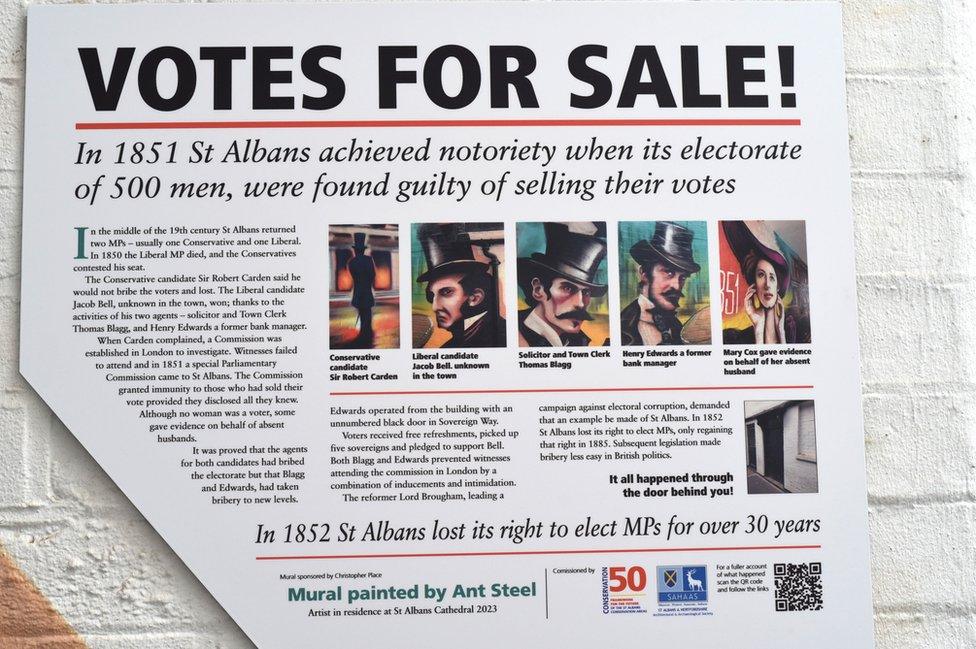
An information panel in Sovereign Way, designed by Roy Bellamy with text by SAHAAS president, Dr John Morewood, now explains the images on the mural
The hearing was moved to St Albans, where "total immunity" was given to anyone who gave evidence.
"That's how they managed to get to the truth," he said, "because there was no penalty for admitting that you had taken a bribe."
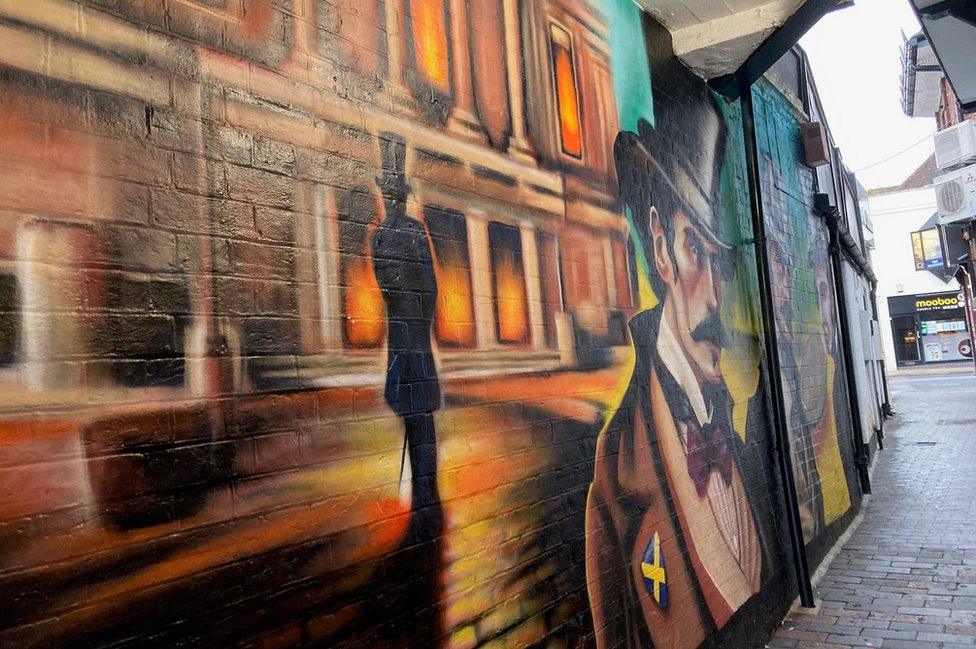
Losing Conservative, Sir Robert Carden, who complained the electorate had been bribed, is depicted in silhouette
The commission sat in 1851 and its subsequent report revealed Bell spent £2,500 on his campaign, much of which was used to buy votes.
It found 308 of the 483 inhabitants entitled to vote took money - the going rate being about £5 a vote.
Faced with such a public scandal, Westminster decided to act.
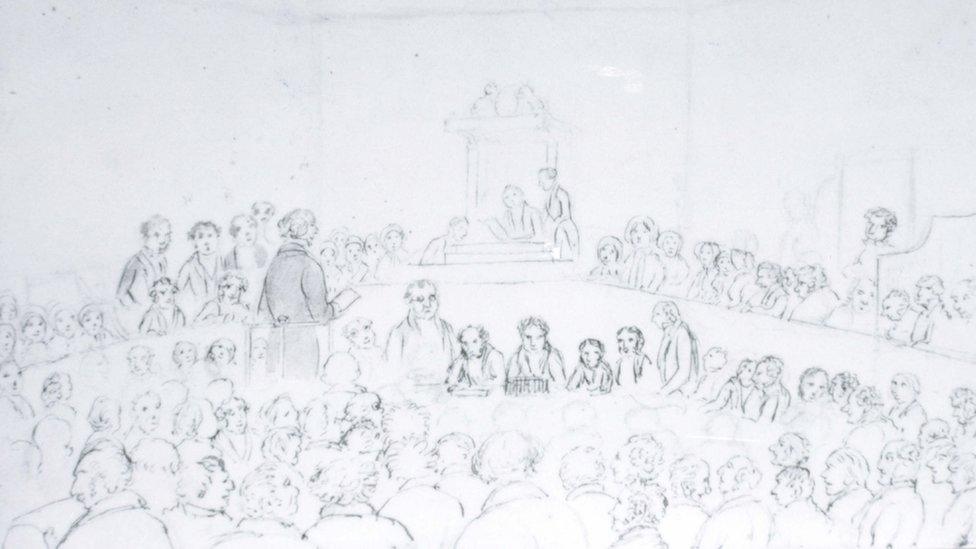
The Parliamentary Commission of 1851 sat in the courtroom in what is now St Albans museum and published its report into the Existence of Bribery in the Borough of St Albans in 1852
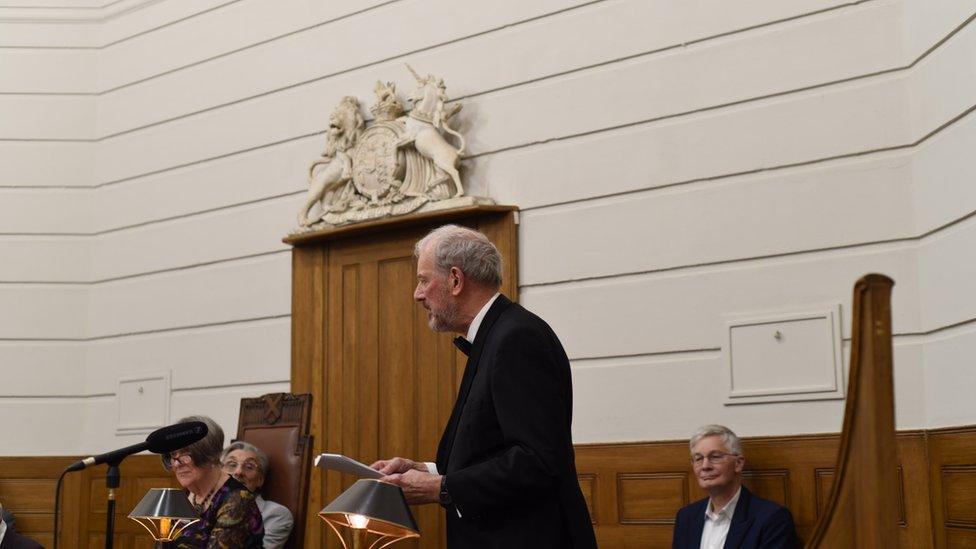
A re-enactment of the Parliamentary Inquiry which took place in the old court room featured Professor Tim Boatswain as Prime Minister, Lord Derby, who urged the House of Lords "that the borough of St Albans ought to be disenfranchised"
St Albans lost its right to have an MP for more than 30 years until 1885, after the Redistribution of Seats Act, external, but the commission's inquiry changed British politics forever.
Prof Boatswain said: "It led to a much bigger debate in parliament where an anti-corruption law was brought in to really deal with bribery so it was a turning point in British politics."
The Corrupt Practice Act of 1852 introduced penalties for those accepting or offering bribes and, for the first time, recorded the monies spent by election candidates.
"Some might say there is still more to be done," Professor Boatswain said, "but corruption now is really about individual politicians, [this] was about the electorate being bribed which is slightly different, but politics will always encourage some sort of corruption because it's about power."
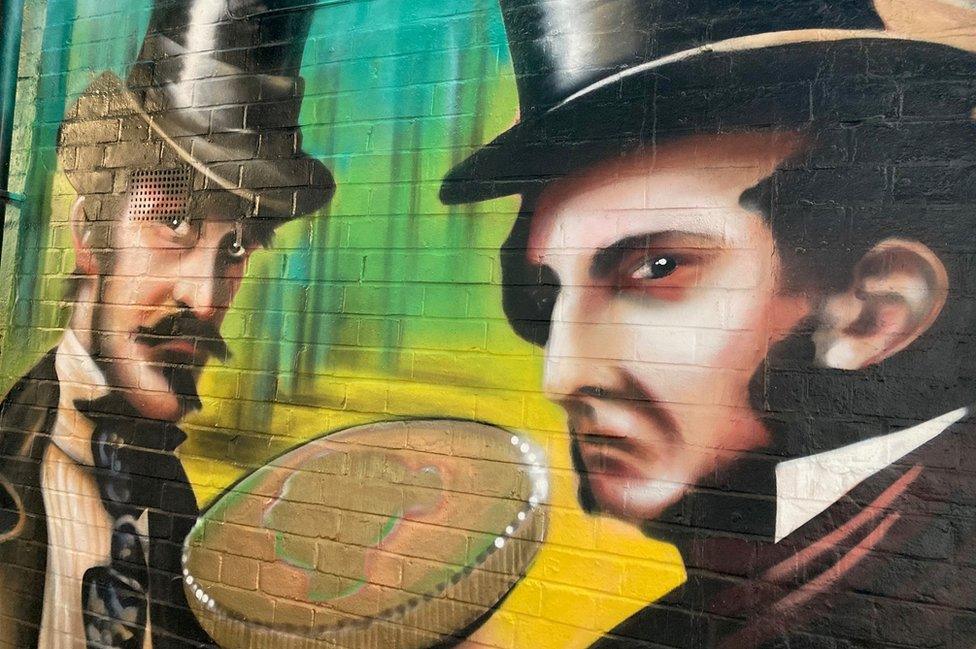
Ant Steel created a mural in Sovereign Way, between Market Place and Chequer Street where party agent Henry Edwards (left) was based and bribed voters with sovereigns to elect Jacob Bell (right)
Last August, artist Ant Steel created a mural depicting the story as part of a project between Conservation 50 and St Albans & Hertfordshire Architectural & Archaeological Society (SAHAAS), to revive the historic alleyways.
This week, an information panel was added and a re-enactment of the inquiry took place in the court room where it was originally held at what is now St Albans Museum.
Prof Boatswain said it was important to reflect the story, but it was part of a bigger campaign to revive hidden, yet historic areas of the city.
"We have a lot of alleyways in the centre of the town and they actually reflect where the flesh [cattle] market was," he said.
"And for the first battle of St Albans in 1455, the Yorkist army came through them. But they have been very neglected over the years and are in a very poor state.
"I picked Sovereign Way as the first one because it was the easiest, all the others have wheelie bins that belong to businesses and it's very difficult to get rid of them.
"It's an ongoing fight but Sovereign Way has been a good pilot because it shows what can be done."
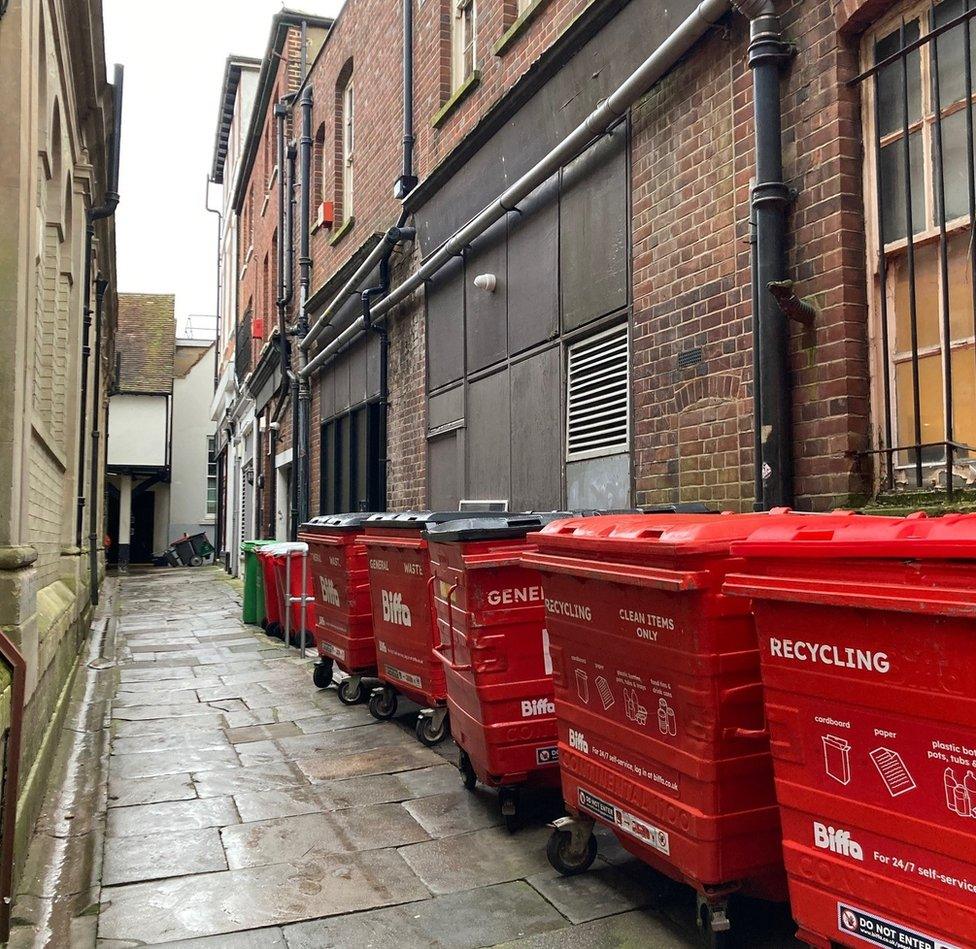
Professor Boatswain says "St Albans is so rich in history" that there could be many more opportunities to revive the city's wheelie-bin filled historic alleys with more stories

Follow East of England news on Facebook, external, Instagram, external and X, external. Got a story? Email eastofenglandnews@bbc.co.uk, external or WhatsApp 0800 169 1830